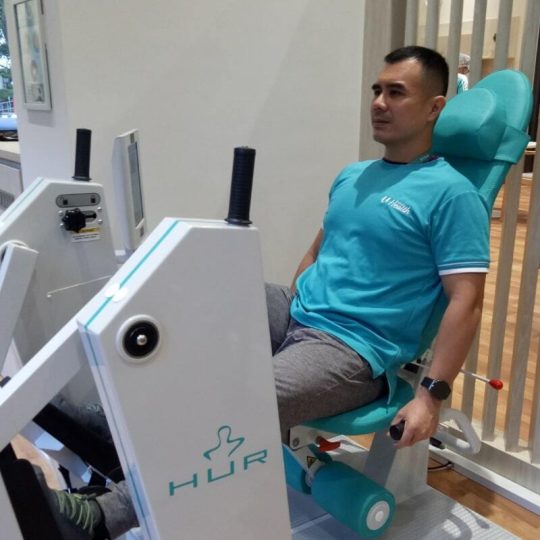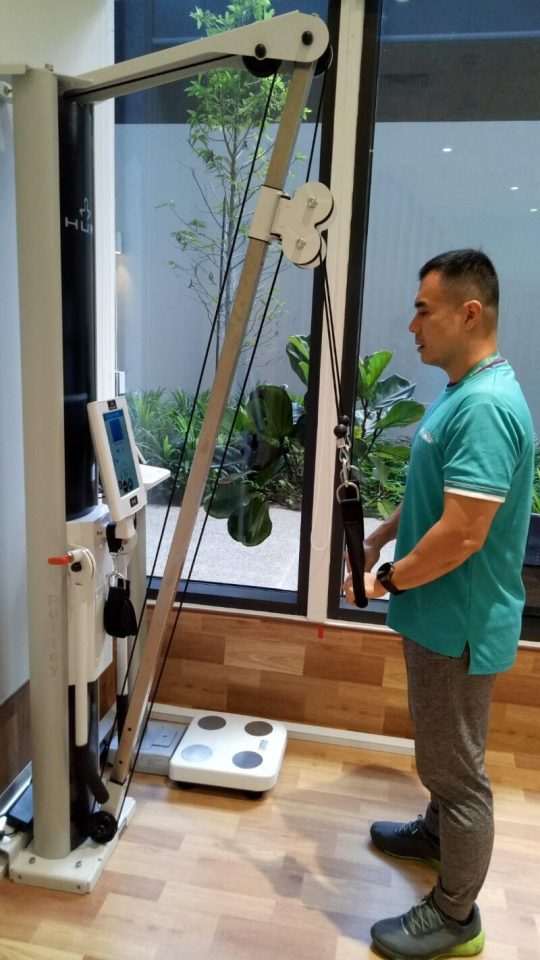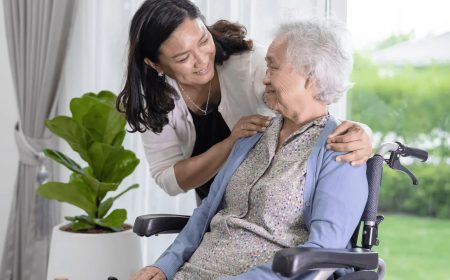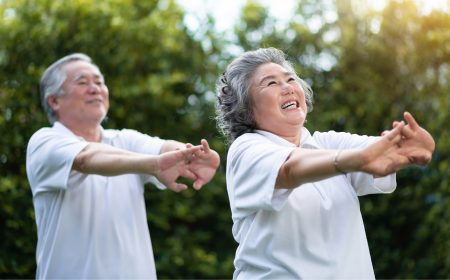You probably already know that exercising for seniors has many benefits such as strengthening muscles, improving endurance, and boosting metabolism. But visiting a gym can be overwhelming sometimes when we see the variety of equipment and not know where to start.
Introducing Circuit Training – a guided exercise programme with moderate intensity, that uses senior-friendly exercise machines. We chatted with Mr Alfred Yaap, a Senior Exercise Trainer from NTUC Health, to understand more about Circuit Training!

Mr Alfred Yaap
Senior Exercise Trainer from NTUC Health
What exactly is Circuit Training?
Circuit training is a style of workout where participants go through a series of five to 10 exercises with short breaks in between. These exercises target different muscle groups for an optimal workout. The circuit training programme is customised to the needs and preferences of the senior. Unlike popular programmes like HIIT and Tabata training that require maximum effort, circuit training has moderate intensity and incorporates senior-friendly gym machines and functional bodyweight exercises.
What are the different types of circuit training programmes available?
Our regular circuit training programme uses gym machines. We also have Kickboxing, Functional Strength Training, and X-Fit classes conducted in a 'Circuit Training' format. Our programmes are suitable for seniors of varying fitness levels, from those who prefer the lower intensity of Functional Strength Training to those who would like to advance to X-Fit, which has moderate intensity.
Why is circuit training beneficial for seniors?
Staying fit will help seniors go about their daily life with more confidence and energy. It can help to boost metabolism in seniors, control their weight, improve muscular strength and endurance.
With regular circuit training, seniors find that they can walk further, faster and may even improve their balance to reduce the risk of falls over time. These fitness programmes can also help alleviate bodily pains, muscle aches and joint stiffness by strengthening surrounding muscle tissue.

Senior Exercise Trainer Mr Alfred Yap demonstrates leg-strengthening exercises on our senior-friendly HUR machine.
Do your clients come to you with specific fitness goals?
Some of the common goals are managing weight, increasing muscle strength, or improving physical functions, such as walking for longer distances and carrying heavier loads.
After completing rehabilitation and physiotherapy programmes, some clients join our fitness classes to maintain their health. We have a client who had undergone knee replacement surgery and found our circuit training helpful with postoperative recovery and reducing joint stiffness. Now, he is able to go back to enjoying the activities he loved, like hiking!
How do you plan a fitness routine for a client?
Our trainers will check on clients' physical condition and functional state during the initial assessment and understand their needs and concerns. A pre-programme interview will help us learn about a client's previous injuries, health conditions, and functional tests.
Next, we will help them to plan an achievable fitness routine based on how they want to improve or maintain their lifestyle. If seniors cannot perform the exercises due to injuries or any musculoskeletal concerns, our trainers will modify the activity for seniors to continue working out without pain or risk of injury.
What are some tips and considerations for seniors before they enrol in circuit training?
We encourage seniors to speak to us to find out more about how our trainer-led exercise classes can be safe and beneficial for them.
To stay motivated and feel supported, we also encourage seniors to join our programmes with family members and friends, as exercise can be a fun bonding opportunity.
For those who have medical conditions, we advise that you speak to your doctor to ensure that you are fit to enrol for any fitness programme.

Mr Yap demonstrates a lateral pull machine that helps build upper body strength.
Can seniors engage in circuit training on their own?
Yes, they can try working out with light dumbbells, resistance bands, stable chairs with armrests, or even fitness corners in the neighbourhood park. Start slow, at a low intensity and with longer or more frequent breaks. Bring along a loved one or a friend to exercise with to make it easier to stick to the regime.
Joining a circuit training class that a trainer leads will provide seniors with better safety and variety. The trainer will ensure that seniors exercise with proper form to prevent injuries. The trainer will also vary the circuit training routine to avoid boredom.
What exercise tips can you share with our audience on keeping fit at home?
A good move for seniors to practise is the sit-to-stand movement, which helps improve the leg muscles to walk and climb stairs.
We recommend getting into a habit of a convenient workout that you can continue doing in the long run.
Avoid overexerting to avoid potential injuries and listen to your body for signs of strain. It is also vital to stop performing any exercise that causes pain.
Do a proper warm-up with dynamic stretches to reduce post-workout muscle soreness and lower the risk of injury. We recommend a time-saving cardio warm-up with light jogging or marching on the spot. After the workout, cool down with stretches for a gradual recovery of the heart rate and blood pressure.
Sign up for Circuit Training
Join our expert fitness trainers at our Elderly Gyms for a workout that is easy and safe for seniors! Sign up for a class today!
This article was first published in Agency For Integrated Care’s website on 21 Jan 2022.


